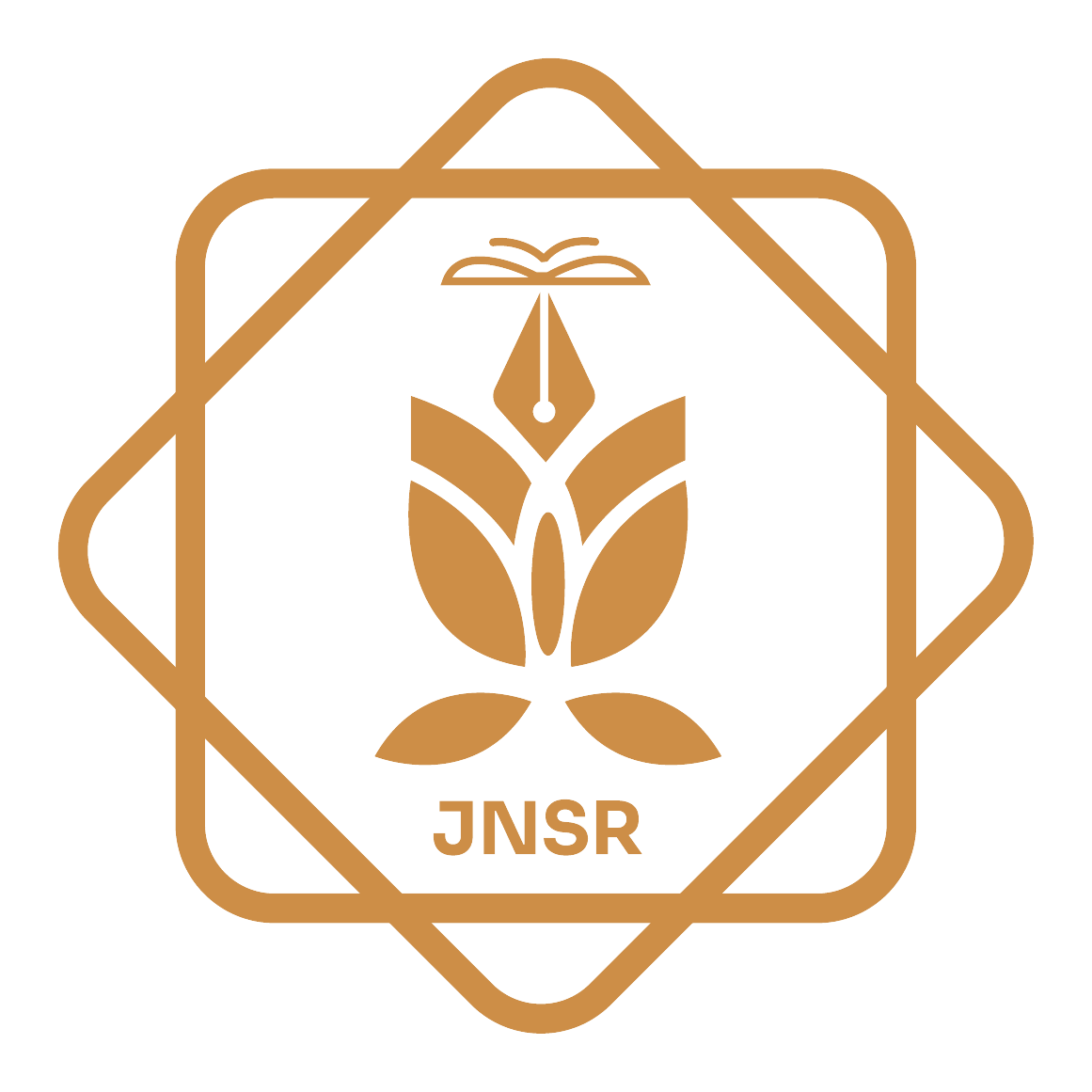Modeling the Transmission Dynamics of the Ebola Virus: Effects of Quarantine and Vaccination
DOI:
https://doi.org/10.62810/jnsr.v2i3.88Keywords:
Backward Bifurcation, Vaccination Strategies, Ebola Epidemic Dynamics, Mathematical Modeling, Quarantine Implementation, Stability AnalysisAbstract
Quarantine and vaccination of individuals suspected of exposure to infectious agents are fundamental public health strategies that have historically been employed to mitigate the transmission of contagious diseases within human populations. This study introduced a modified SEIVQRD deterministic model to evaluate the population-level effects of quarantine and vaccination on individuals potentially exposed to the Ebola virus. The study showed that the Model exhibits backward bifurcation when . This implies that even when the reproductive number An unstable endemic and a stable disease-free equilibrium can coexist in less than one. This phenomenon arises from imperfect quarantine and indicates that while is necessary for adequate infection control; it is no longer sufficient and creates additional challenges for effectively controlling Ebola. Furthermore, the sensitivity analysis revealed that the quarantine effectiveness parameter and the parameter related to the isolation of vulnerable individuals had less influence on the incidence of new Ebola cases. However, vaccinating non-quarantined susceptible individuals significantly affects the infection burden and can lower the reproductive value to less than one. Overall, the Model emphasizes the critical role of vaccination in reducing Ebola virus transmission. Although quarantine measures alone may not be sufficient, their combination with vaccination can significantly reduce infection rates.
Downloads
References
Alimi, A. A., & Ayoade, A. A. (2023). Mathematical modeling of the effect of vaccination on the dynamics of infectious diseases. Nepal Journal of Mathematical Sciences, 4(1), 1–10. https://doi.org/10.3126/njmathsci.v4i1.53151 DOI: https://doi.org/10.3126/njmathsci.v4i1.53151
Bisimwa, P., Biamba, C., Aborode, A. T., Cakwira, H., & Akilimali, A. (2022). Ebola virus disease outbreak in the Democratic Republic of the Congo: A mini-review. Annals of Medicine and Surgery, 80. https://doi.org/10.1016/j.amsu.2022.104213 DOI: https://doi.org/10.1016/j.amsu.2022.104213
Brabers, J. H. V. J. (2023). The spread of infectious diseases from a physics perspective. Biology Methods and Protocols, 8(1). https://doi.org/10.1093/biomethods/bpad010 DOI: https://doi.org/10.1093/biomethods/bpad010
Brettin, A., Rossi–Goldthorpe, R., Weishaar, K., & Erovenko, I. V. (2018). Ebola could be eradicated through voluntary vaccination. Royal Society Open Science, 5(1), 171591. https://doi.org/10.1098/rsos.171591 DOI: https://doi.org/10.1098/rsos.171591
Castillo-Chavez, C., & Song, B. (2004). Dynamical models of tuberculosis and their applications. Mathematical Biosciences & Engineering, 1(2), 361–404. https://doi.org/10.3934/mbe.2004.1.361 DOI: https://doi.org/10.3934/mbe.2004.1.361
Dénes, A., & Gumel, A. B. (2019). Modeling the impact of quarantine during an outbreak of Ebola virus disease. Infectious Disease Modelling, 4, 12–27. https://doi.org/10.1016/j.idm.2019.01.003 DOI: https://doi.org/10.1016/j.idm.2019.01.003
Desai, K., & Arora, P. (2023). Burden of infectious diseases and strategies of prevention. In Elsevier eBooks (pp. 49–61). https://doi.org/10.1016/b978-0-323-85730-7.00052-7 DOI: https://doi.org/10.1016/B978-0-323-85730-7.00052-7
Diekmann, O., Heesterbeek, J. a. P., & Roberts, M. G. (2009). The construction of next-generation matrices for compartmental epidemic models. Journal of the Royal Society Interface, 7(47), 873–885. https://doi.org/10.1098/rsif.2009.0386 DOI: https://doi.org/10.1098/rsif.2009.0386
Dubey, P., Dubey, B., & Dubey, U. S. (2016). An SIR Model with Nonlinear Incidence Rate and Holling Type III Treatment Rate. In Springer proceedings in mathematics & statistics (pp. 63–81). https://doi.org/10.1007/978-81-322-3640-5_4 DOI: https://doi.org/10.1007/978-81-322-3640-5_4
Harris, P. J., & Bodmann, B. E. J. (2022). A mathematical model for simulating the spread of a disease through a country divided into geographical regions with different population densities. Journal of Mathematical Biology, 85(4). https://doi.org/10.1007/s00285-022-01803-6 DOI: https://doi.org/10.1007/s00285-022-01803-6
Isiaka, N. a. B., Anakwenze, N. V. N., Ilodinso, N. C. R., Anaukwu, N. C. G., Ezeokoli, N. C. M., Noi, N. S. M., Agboola, N. G. O., & Adonu, N. R. M. (2024). Harnessing artificial intelligence for early detection and management of infectious disease outbreaks. International Journal of Innovative Research and Development. https://doi.org/10.24940/ijird/2024/v13/i2/feb24016 DOI: https://doi.org/10.24940/ijird/2024/v13/i2/FEB24016
Jain, S., Khaiboullina, S., Martynova, E., Morzunov, S., & Baranwal, M. (2023). Epidemiology of Ebolaviruses from an Etiological Perspective. Pathogens, 12(2), 248. https://doi.org/10.3390/pathogens12020248 DOI: https://doi.org/10.3390/pathogens12020248
Liu, S. (2023). Disease mechanism and treatment method of Ebola virus. Highlights in Science Engineering and Technology, 45, 116–121. https://doi.org/10.54097/hset.v45i.7331 DOI: https://doi.org/10.54097/hset.v45i.7331
Maldonado, Y. A. (2023). Lessons from a House on Fire—from smallpox to polio. The Journal of Infectious Diseases, 227(9), 1025–1027. https://doi.org/10.1093/infdis/jiad017 DOI: https://doi.org/10.1093/infdis/jiad017
Marino, S., Hogue, I. B., Ray, C. J., & Kirschner, D. E. (2008). A methodology for performing global uncertainty and sensitivity analysis in systems biology. Journal of Theoretical Biology, 254(1), 178–196. https://doi.org/10.1016/j.jtbi.2008.04.011 DOI: https://doi.org/10.1016/j.jtbi.2008.04.011
Niyukuri, D., Sinigirira, K. J. G., De Dieu Kwizera, J., & Adam, S. O. A. (2023, June 3). Ebola transmission dynamics: will future Ebola outbreaks become cyclic? arXiv.org. http://arxiv.org/abs/2306.02075
Nurwijaya, S., Kurniati, R., MA, & Sugiarto, S. (2023). DYNAMICAL SYSTEM FOR EBOLA OUTBREAK WITHIN QUARANTINE AND VACCINATION TREATMENTS. BAREKENG JURNAL ILMU MATEMATIKA DAN TERAPAN, 17(2), 0615–0624. https://doi.org/10.30598/barekengvol17iss2pp0615-0624 DOI: https://doi.org/10.30598/barekengvol17iss2pp0615-0624
Pecoraro, F., Luzi, D., & Clemente, F. (2021). The efficiency in the ordinary hospital bed management: A comparative analysis in four European countries before the COVID-19 outbreak. PLoS ONE, 16(3), e0248867. https://doi.org/10.1371/journal.pone.0248867 DOI: https://doi.org/10.1371/journal.pone.0248867
Rai, N. R., Sharma, N. A., & Negi, N. S. (2024). Emerging infectious diseases: a persistent threat to the community. International Healthcare Research Journal, 7(12), RV17–RV20. https://doi.org/10.26440/ihrj/0712.03626 DOI: https://doi.org/10.26440/IHRJ/0712.03626
Sabaté, M. C. (2023). Mathematical modelling to study infectious diseases: from understanding to prediction. https://doi.org/10.5821/dissertation-2117-358138 DOI: https://doi.org/10.5821/dissertation-2117-358138
Siddique, M. P. (2022). Coping with Contagious Diseases: A Global Perspective. Journal of Islamic International Medical College, 17(3), 148–151. https://doi.org/10.57234/1543 DOI: https://doi.org/10.57234/1543
Samadi, A. (2024). Impacts of Climate Change on Vector-Borne Diseases of Animals and Humans with Special Emphasis on Afghanistan. Journal of Natural Science Review, 2(1), 1–20. https://doi.org/10.62810/jnsr.v2i1.35 DOI: https://doi.org/10.62810/jnsr.v2i1.35
Umutesi, G., Moon, T. D., Makam, J. K., Diomande, F., Cherry, C. B., Tuopileyi, R. N., II, Zakari, W., & Craig, A. S. (2023). Evaluation of acute flaccid paralysis surveillance performance before and during the 2014-2015 Ebola virus disease outbreak in Guinea and Liberia. Pan African Medical Journal, 45. https://doi.org/10.11604/pamj.2023.45.190.21480 DOI: https://doi.org/10.11604/pamj.2023.45.190.21480
Downloads
Published
How to Cite
Issue
Section
License
Copyright (c) 2024 Wahidullah Zgham, Sarojkumar Sahani, Hezbullah Rahimi

This work is licensed under a Creative Commons Attribution-NonCommercial 4.0 International License.












